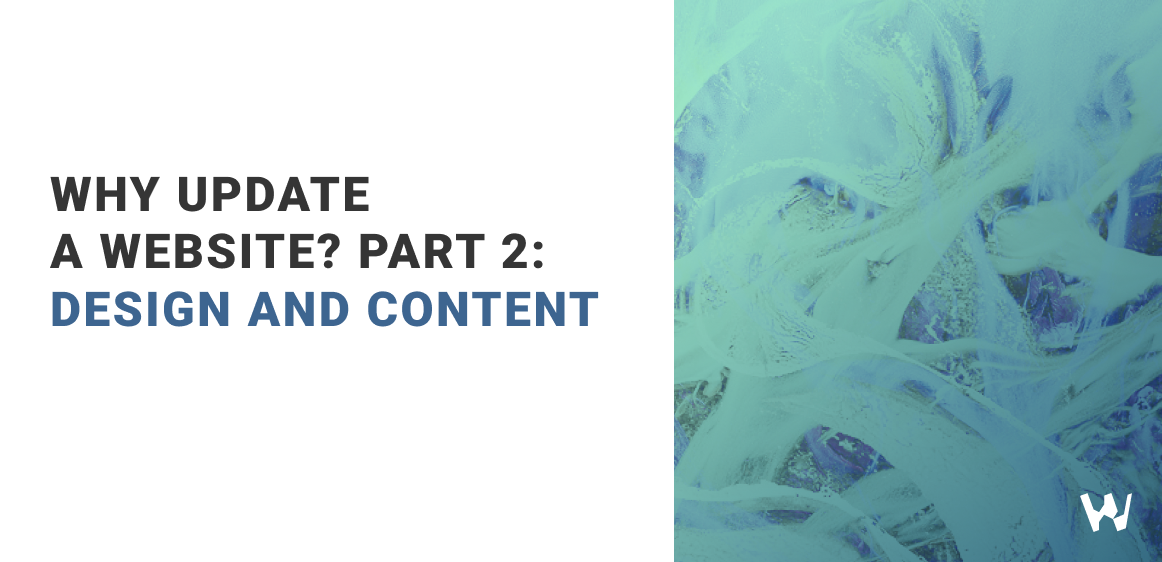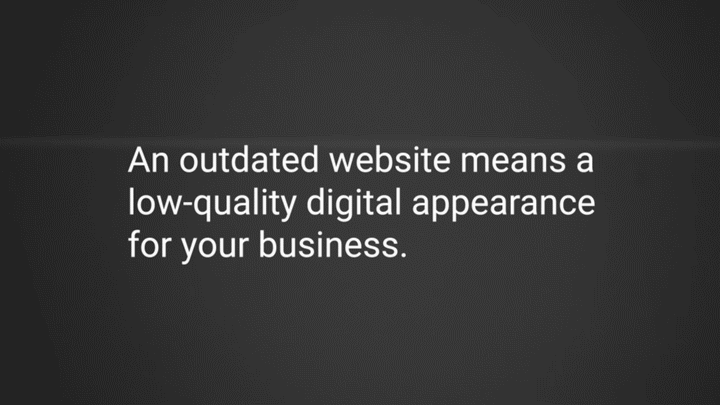Why update a website? Part 2: design and content

The functionality of the site is about 2-3 years. After that, what was effective before no longer works. As technology develops very quickly, the website becomes obsolete and fails to meet the users' needs.
In this text, we continue the theme of the necessity of updating your Web site. Our attention will be to the components that influence positive user experience. We will also discuss UX writing, which guarantees the highest level of usability and quality of the user experience.
Let us remind you that the first part of the topic - the importance of technical and SEO updates - you can also read on our blog. So, what could be wrong with design and content?

Design is outdated or uncomfortable to follow
Visitors of your site treat its appearance as a reflection of your company. One out of every two users bases their attitude to you on that. You will be seen as an expert if your site will contain valuable information for users and look professional.
If your site has one or more of the following annoying factors — they need to be corrected.
Irritating factors:
- Images are low quality, heavily stretched, or outdated;
- Use of stock photos that don't represent the business;
- Mismatched or excessive graphics;
- Outdated moving visuals;
- A large or too small font that is hard to read;
- The excess of textual information and lack of structure;
- Site elements are moving to the side or overlapping with each other;
- obtrusive, too bright, or mindlessly repetitive background;
- Redundancy, a mixture of different elements and lack of free space;
- Lack of a unified style.
As trends change, your website gets outdated very quickly. People tend to buy from companies that work fast and make sure their site looks as current as possible. A specific case of obsolescence is the completed rebranding of a company without implementing changes to the site.
The functionality is outdated or limits the interaction.
The site's goal is to provide visitors with everything they need to make an informed decision about buying or ordering a service. That's why it needs to be user-friendly so that the user can quickly find everything they're interested in. Whether navigating through pages, searching for information, or interacting with elements, everything should be as intuitive and straightforward as possible, clear and structured.
Explore your site in different browsers and across devices. Follow the same path you want new clients to take to conversion. Then ask the question, "How easy is it?"
Irritating factors:
- A hidden or unfamiliarly located navigation bar. Usually, users look for it at the top or on the left. If it's missing, they don't know what to do;
- Poorly designed menus with a massive list of subcategories or confusion about them. Long lists are difficult to follow;
- Lack of familiar things. For example, such parts of the structure as "About Us," "Contacts," "Products and Services," or "Payment and Delivery." They are so familiar that without them, the site seems incomplete;
- It complicated registration and login. The ability to log in by using social networks or Google-account makes life much easier for the user.
- Every page should have a straightforward way to return to the home page (for example, clickable logo).
- A pop-up screen appears before your user even gets to the home page.
User experience (UX) is not about how it looks but about the overall experience visitors have with your site. UX is about the ease and clarity of interaction with it. Visitors shouldn't have any questions when they try to act. For example, the ease of navigation or the presence of effective calls to action (buttons or links) that convert users into customers.
Useless content for the user
Design forms the first impression of your site. But also readers visit it because they are looking for helpful information. Fresh and unique content is an essential engaging factor. Therefore, website content could help to understand how effective your site is.
Messages on your site should represent the brand. Their purpose is to describe the value of the product or services to the users and quickly convince them to help solve their problems.
Thinking of updating your site can also allow you to rethink the way you communicate with your visitors. For example, you can write more effective texts, which is crucial because you only have 3 seconds to get the attention of new visitors.
Irritating factors:
- Outdated content. The site should be updated regularly with fresh content. It will increase overall customer confidence in your business and will be beneficial for SEO. You could also improve the old content you can.
- You are displaying irrelevant information. Your information should always be up-to-date. It also applies to prices and contact information.
- Old, spammed with keywords text. Those texts are better to remove because you can get them under the filter of the search bot. If this happens - the site will fall in the search results.
- Irrelevant content. New content should be added with the consideration that concerns your target audience. It should provide answers to their concerns in a simple and easy-to-understand form.
- Obsolete dates. Companies often post information related to dates. If you don't update regularly, this information can become inaccurate or give the wrong impression. For example, the text "the company has been operating for 10 years" will quickly get old and mislead users. It is better to use the following wording: "the company works since 2002" - this information will not lose relevance. We'll come back to this topic below in the UX writing section.
- There is no multimedia content. Videos, audio, and infographics can help get your message across. After all, different people consume websites in different ways. The more ways you present information, the more customer base you can build.
What is UX writing, and why it matters?
In brief, UX-writing guides your site visitor's actions. It explains what to do and why and where to click or tap to obtain the desired action. UX-writing covers producing text on buttons, tags, icons, and notifications. Also, it appears with error messages, navigation, and user instructions.
All these texts are part of a website design and user experience. They should be specific on each site depending on its goal, brand's tone of voice and can't unify to different cases.
Even the latest UX methodology can't deliver an optimal user experience without text. There is always the risk of double meaning, misassociations, and wrong assumptions about what is happening on the page without guiding words.
Irritating factors:
- The text is unclear. Users have difficulty understanding what they want to say and what to do next. For example, to show buttons with text "sign up" and "sign-in" is much less precise than to use "register" and "sign-in" texts on them;
- Long texts. Users are paying less attention to read long paragraphs and sentences;
- Inconsistency. Writing style and terminology vary from page to page. For example, one CTA page has a button signed as "order" and another as "contact us." Also, the content may not match the brand style.
In UX-writing, each word is important because it serves a specific function - informational or persuasive. Moreover, because the text is a design element, its effectiveness also depends on visual consistency with the entire page design. Therefore, we recommend engaging copywriters to work on layout in the early stages of UX-designers' work.
Conclusion
If you're looking for assistance to determine if your site needs an update — contact the Webmil Web-production. We offer a UX audit of the site and create a full report afterward. Besides, our experts help develop an effective strategy to improve the site and put it into practice.